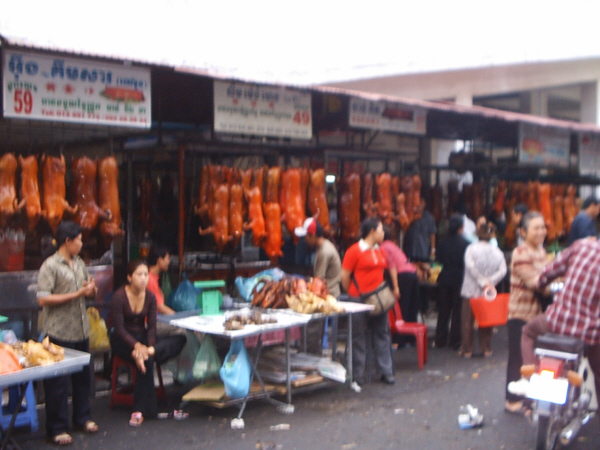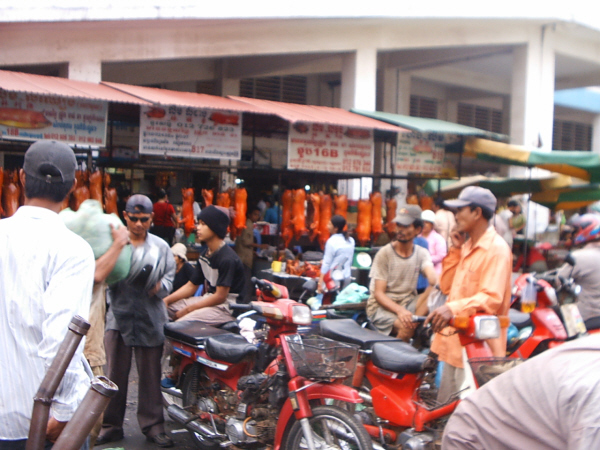| extra_vars1 | ||||||||||||||||||||||||||| |
|---|---|
| extra_vars2 | ||||||#7FC700||||||checked||||||||||||||||||||||||||||||||||||||||||||||||||||||||||||||||||||||||||| |


The sights of Phnom Penh are largely cultural and historical but only part of the experience exploring the city. Exotic shopping, unique dining, indulgent spas and a bit of nightlife complete the Phnom Penh experience. Set aside two or three days to see the major points of interest. It is possible to squeeze the most important sights into a single day, but this leaves very little time at each. Popular city sights include the Royal Palace and Silver Pagoda, the Toul Sleng Genocide Museum and the Khmer Rouge ‘Killing Fields,’ the National Museum, the Russian Market, Central Market and Wat Phnom. Except for the ‘Killing Fields,’ which is about 16km away, all of the major points are inside the city within a five or ten minute car/moto ride of each other. Most people hire transportation for half-day or a day at a time to take in the sights. Consider a cyclo or even a walking tour for a more intimate look at the city. There are several Angkorian-era ruins and other historic sites 20-60km outside town. See Day Trips.
 Independence Monument
Independence Monument
(At the intersection of Norodom and Sihanouk)
The Independence Monument (Vimean Ekareach) was inaugurated in November 9, 1962, celebrating Cambodia’s independence from foreign rule. Renowned Cambodian architect Vann Molyvann was the architect of the monument which is patterned on a lotus flower bud, adorned with Naga heads (multi-headed cobras,) and obviously reminiscent in design of the towers of Angkor Wat. The Independence Monument now also serves as a monument to Cambodia’s war dead as well as her independence. The Independence Monument sit in the center of the traffic circle at the intersection of Norodom Blvd. and Sihanouk Blvd. and is the site of colorful celebrations and services on political holidays such as Independence Day (January 7) and Constitution Day (September 24.)
 National Museum
National Museum
(Street 178 & Street 13, next to the Royal Palace - $3.00 - 8:00-5:00, open everyday)
The distinctive rust-red National Museum next to the Royal Palace was dedicated by King Sisowath in 1920. Over 5000 objects are on display including Angkorian era statues, lingas and other artifacts, most notably the legendary statue of the ‘Leper King.’ Though the emphasis is on Angkorian artifacts, there is also a good collection of pieces from later periods, including a special exhibition of post-Angkorian Buddha figures. Visiting the museum after rather than before a trip to the Angkor Archaeological Park in Siem Reap helps lend context to the Angkorian artifacts. Multi-lingual tour guides are available. Souvenirs and books available. Photography is limited. The museum borders Street 178, aka ‘Artist’s Street’ which is lined with local art galleries and souvenir shops. The Reyum Gallery on Street 178 is of particular note, exhibiting the works of contemporary Cambodian artists.
 Royal Palace and ‘Silver Pagoda’
Royal Palace and ‘Silver Pagoda’
(Sothearos between Streets 240 & 184 - $3.00/person, $2.00/camera, $5.00/video cam. Open everyday, 7:30-11:00 / 2:30-5:00)
Marking the approach to the Royal Palace along Sothearos Blvd the high yellow crenellated wall and spired Chanchhaya Pavilion stand distinctively against the riverfront skyline. Inside the Palace grounds street sounds are silenced by the high walls and the royal buildings sit like ornate islands rising from the manicured gardens. The Royal Palace serves as the residence of the King, a venue for court ceremony and as a symbol of the Kingdom. It was first established at its present location when the capital was moved from Oudong to Phnom Penh in 1866 under King Norodom and the French protectorate, though the Palace did not attain its current general form until about 1920. Khmer and European elements as well as distinct architectural echoes of the palace in Bangkok are present in the design of the various buildings. Attached to the Palace compound, Wat Preah Keo Morokat (the 'Silver Pagoda') is unique amongst pagodas. So named for its silver tiled floor, it is where the King meets with monks, Royal ceremonies are performed and it houses a collection of priceless Buddhist and historical objects including the 'Emerald Buddha.' And, unlike most pagodas, no monks live at the pagoda. The temple building, library and galleries were first constructed between 1892 and 1902.
See the Royal Palace and Silver Pagoda page for more.
For more see Julio Jeldres' book 'The Royal Palace of Phnom Penh and Cambodian Royal Life' Street 240...(more)  Wat Phnom
Wat Phnom
(Intersection of Street 96 and Norodom Blvd. - $1/person)
A small hill crowned by an active wat (pagoda) marks the legendary founding place of the Phnom Penh. The hill is the site of constant activity, with a steady stream of the faithful trekking to the vihear, shrines and fortune tellers on top and a constellation of vendors, visitors and motodups at the bottom. Elephant rides available. The legend of the founding of Wat Phnom is tied to the beginnings of Phnom Penh. Legend has it that in 1372 Lady Penh (Yea Penh) fished a floating Koki tree out of the river. Inside the tree were four Buddha statues. She built a hill (‘phnom’ means ‘hill’) and a small temple (wat) at what is now the site known as Wat Phnom. Later, the surrounding area became known after the hill (Phnom) and its creator (Penh), hence the name of the city ‘Phnom Penh.’ The current temple was last rebuilt in 1926. The large stupa contains the remains of King Ponhea Yat (1405-1467) who moved the Khmer capital from Angkor to Phnom Penh the early 15th century. Look for the altar of Lady Penh between the large stupa and the vihear. She is said to be of particular help to women.
 River Cruises
River Cruises
Short river cruises and sunset cruises along the Phnom Penh riverfront are easy to arrange and offer an interesting view of the city. A tour cruise typically takes about 1 - 2 hours and runs up the Tonle Sap River along the central riverfront area providing a picturesque view of the Royal Palace, National Museum, parks and Phnom Penh skyline, and then across the Tonle Sap and up the Mekong River to view floating fishing villages. (Photography note: Best lighting in the early morning as the low eastern sun illuminates the front of the Royal Palace and riverfront area.) Longer cruises are also possible and can be tailored to your requirements - upriver tours to villages and paddies, dinner and party cruises, sunset cruises, trips to Silk Island and Mekong Island.
Boat trips can be arranged through your hotel or travel agent or you can deal with the operators directly. Tourist boats are clustered together on the river along Sisowath Quay just north of the Passenger Port near Wat Phnom. Boats start at around $10/hour, depending on the duration of the trip and number of passengers.
Experience Mekong
Boat offers single/multi-day trips for individuals and groups. General touring and cultural trips on the Mekong or Tonle Sap to see daily life.
Tel: 012-432456, 015-483018
Kanika Floating Restaurant Bar
Unique luxury catamaran with full bar and restaurant. Daily lunch, sunset and dinner cruises. Apsara dance dinner cruises. Available for charters, special events, parties. Located in back of the Himawarwi Hotel on the river.
Tel: 012-848802, 089-848959
www.kanikaboat.com  The River Front
The River Front
Some of Phnom Penh's most important cultural sites as well as dozens of pubs, restaurants and shops sit along the picturesque park-lined riverfront overlooking the chaktomuk - the confluence of the Tonle Sap, Mekong and Bassac Rivers. The Royal Palace, the Silver Pagoda and the National Museum are clustered together between Street 178 and 240 and restaurants and pubs line the riverfront road Sisowath Quay, stretching north from the Royal Palace area all the way to Street 104 near Wat Phnom. Visit the Royal Palace and National Museum and stroll up the riverfront for a drink or a meal or to do some shopping. Just off the riverfront, Street 240 behind the Royal Palace harbors several restaurants and high-quality boutiques and Street 178 next to the National Museum is known as 'Art Street' and is dotted with interesting little art galleries and silk shops. Early risers, check out the spectacular sunrise over the river in front of the Royal Palace area.
Architecturally speaking, Phnom Penh is a comparatively new city. Prior to the late 19th century the city was but a few pagodas and clusters of wooden structures along the riverfront. Almost every currently existing structure was built after the beginning of the French colonial period in 1863. ‘Chinese shophouse’ style buildings dominate the city, characterized by deep narrow apartments made up of a combined ground-floor business-front and upstairs residence. Standing in distinctive difference, old European influenced colonial period structures are interspersed through the central city. At the height of the colonial period Phnom Penh was reputed to be the most beautiful city in French Indochina - recalling Paris in its manicured parks and picturesque boulevards lined with ornate villas. Though sometimes difficult to see through the grime and disrepair of years of hardship and neglect, much of that beauty still exists..For more on the architecture of Phnom Penh and a architecture tour map and guide, see here.
댓글 0
| 번호 | 제목 | 글쓴이 | 조회 수 |
|---|---|---|---|
| 37 |
내기골프
| kimswed | 2668 |
| 36 |
압사라춤의진수
| kimswed | 3010 |
| 35 |
해외골프매너
| kimswed | 3482 |
| 34 |
캄보디아귀신
| kimswed | 3717 |
| 33 |
캄보디아불교현황
| kimswed | 6455 |
| 32 |
언니는미국/동생은한국
| kimswed | 2940 |
| 31 |
베트남에서캄보디아국경
| kimswed | 2403 |
| 30 |
크메르학살
| kimswed | 4900 |
| 29 |
캄퐁솜결혼
| kimswed | 2351 |
| 28 |
프놈펜8
| kimswed | 2945 |
| 27 |
phnompenh city
| kimswed | 3519 |
| » |
phnompenh central marker
| kimswed | 2239 |
| 25 |
메콩강기행
| kimswed | 4874 |
| 24 |
내고향-시아누크빌
| kimswed | 2539 |
| 23 |
아침식사<gundown>
| kimswed | 2296 |
| 22 |
캄보디아음식문화<gundown>
| kimswed | 2494 |
| 21 |
캄보디아야시장<gundown>
| kimswed | 1963 |
| 20 |
초대형물고기
| kimswed | 2498 |
| 19 |
라오스기행<kimjk10님의불로그:출처>
| kimswed | 1664 |
| 18 |
캄보디아정경
| kimswed | 1770 |
| 17 |
캄보디아여행기5
| kimswed | 2228 |
| 16 |
임신하면죽을대까지살아야
| kimswed | 2217 |
| 15 |
시골학교가이렇다
| kimswed | 2195 |
| 14 |
캄보디아/태국국경
| kimswed | 2098 |
| 13 |
앙코르사진전
| kimswed | 2178 |
| 12 |
여행후기56
| kimswed | 1568 |
| 11 |
아이들생활상
| kimswed | 1970 |
| 10 |
여성과어린이노동
| kimswed | 1579 |
| 9 |
전통춤
| kimswed | 2159 |
| 8 |
전통풍습
| kimswed | 2798 |


